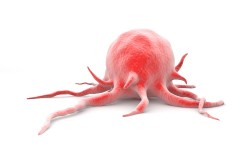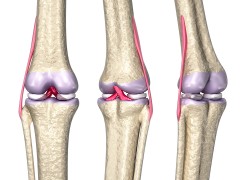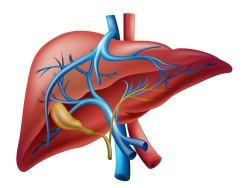8 proven facts about the benefits of arugula for humans
Arugula is a unique representative of the Cruciferous family, which is widely used in cooking, evidence–based and folk medicine.
Arugula contains a lot of vitamins, minerals and antioxidants in its composition, which determine its health benefits. With regular use of the herb, there is a decrease in blood pressure, a decrease in the risk of developing malignant neoplasms and anemia, body weight is normalized, and the health of the musculoskeletal and digestive systems improves.
Content
How it is useful – 8 properties
Below are the 8 main beneficial properties of arugula for humans, scientifically proven.
1. The content of valuable substances

Arugula is a fairly low–calorie product (about 25 calories per 100 grams).
100 grams of arugula will win the following Nutrients:
| Name of the nutrient | Specific gravity or percentage of daily requirement |
| Squirrels | 2.6 grams |
| Fats | 0.7 grams |
| Carbohydrates | 3.7 grams |
| Fiber | 1.6 grams |
| Sugar | 2.1 grams |
| Vitamin K | 45 % |
| Calcium | 8 % |
| Folic Acid | 12 % |
| Vitamin A | 20 % |
| Potassium | 8 % |
| Vitamin C | 23 % |
The composition also contains a small amount of zinc, copper, manganese, iron and B vitamins.
Each ingredient plays an individual but essential role in the body:
- Calcium - supports the health of bones and teeth, provides neuromuscular transmission of impulses;
- Potassium - reduces blood pressure and ensures adequate contraction of the heart muscle;
- Folic acid - necessary for pregnant women, as it is responsible for the formation of the neural tube of the fetus and protects DNA from any damage;
- Vitamin C - has antioxidant activity and strengthens the immune system .
2. Cancer prevention
 According to the data Spanish scientists, the consumption of any vegetables of the Cabbage family (arugula is included in it) is associated with a low incidence of various types of cancer.
According to the data Spanish scientists, the consumption of any vegetables of the Cabbage family (arugula is included in it) is associated with a low incidence of various types of cancer.
Erucin, which is part of arugula, inhibits the proliferation of malignant cells, destroys the tumor at the earliest stages of development.
Vitamin C plays an additional role, which also has pronounced antitumor activity. He Stimulates the immune system , as a result, immune cells more effectively recognize and destroy cancer cells.
3. Prevention of anemia
 Anemia is a fairly common disease in modern society. Most often, its cause is a deficiency of iron or folic acid, especially in the presence of chronic diseases of the stomach and small intestine, in which the absorption of these nutrients is impaired.
Anemia is a fairly common disease in modern society. Most often, its cause is a deficiency of iron or folic acid, especially in the presence of chronic diseases of the stomach and small intestine, in which the absorption of these nutrients is impaired.
According to the data of the National Institutes of Health (USA), taking arugula salad reduces the likelihood of anemia associated with insufficient intake of folic acid or iron into the body or impaired absorption of these substances.
4. Maintaining bone health
 100 grams of arugula contains about half of the daily requirement of vitamin K. This substance increases the bioavailability of calcium (a building macronutrient of bone tissue) and directly regulates bone metabolism.
100 grams of arugula contains about half of the daily requirement of vitamin K. This substance increases the bioavailability of calcium (a building macronutrient of bone tissue) and directly regulates bone metabolism.
Foreign studies demonstrate that low vitamin K intake is associated with a decrease in bone mineral density (osteoporosis) and a high incidence of pathological fractures.
It is recommended to include arugula in the diet in the elderly, as well as women after menopause, when there is a physiological metabolic disorder in the bones.
5. Liver protection
 Installed
that arugula contains a large amount of chlorophyll, a pigment that
Protects liver cells
from exposure to any toxic substances (for example, alcohol), prevents their malignant degeneration.
Installed
that arugula contains a large amount of chlorophyll, a pigment that
Protects liver cells
from exposure to any toxic substances (for example, alcohol), prevents their malignant degeneration.
With regular consumption of vegetables, pathologies such as fatty hepatosis or cirrhosis of the liver are less common, which often develop in the presence of chronic viral hepatitis, liver cancer, and systemic obesity.
6. Suppression of chronic inflammation
 Chronic inflammation is a complex physiological process that occurs mainly in the walls of the colon and adipose tissue. It is this mechanism that is a risk factor for the development of type II diabetes mellitus, hypertension, atherosclerosis and a number of other extremely dangerous pathologies.
Chronic inflammation is a complex physiological process that occurs mainly in the walls of the colon and adipose tissue. It is this mechanism that is a risk factor for the development of type II diabetes mellitus, hypertension, atherosclerosis and a number of other extremely dangerous pathologies.
Specialists from Taiwan proved that arugula contains indole-3-carbinol and isocyanates, which are able to suppress chronic inflammation in the body by inhibiting key mediators of the development of this process (tumor necrosis factor alpha, interleukin 10, etc.).
7. Lowering blood pressure
 Research conducted in the UK, demonstrate
that arugula contains a significant amount of nitric oxide, which can have a biological effect in the human body.
Research conducted in the UK, demonstrate
that arugula contains a significant amount of nitric oxide, which can have a biological effect in the human body.
Nitric oxide is local vasodilator factor , affecting mainly the muscle tissue of arterial vessels. A decrease in arterial muscle tone leads to a decrease in the total peripheral vascular resistance, a decrease in blood pressure and a load on the heart.
It is recommended to use arugula leaves and root for the prevention and treatment (together with medications) of hypertension, as well as for the correction of heart failure.
It is important to note that arugula is one of the aromatic herbs (along with basil, cinnamon, rosemary) that reduce cravings for table salt, which causes an increase in blood pressure.
8. Weight Loss Aid
 Fiber contained in arugula is
prebiotic
, stimulating the growth and reproduction of beneficial microorganisms and inhibiting the vital activity of pathogenic and opportunistic bacterial agents.
Fiber contained in arugula is
prebiotic
, stimulating the growth and reproduction of beneficial microorganisms and inhibiting the vital activity of pathogenic and opportunistic bacterial agents.
Fiber also stimulates the motor activity of the digestive tract, prevents the retention of feces in the body and constipation.
According to foreign scientists ( times , two ), the well–coordinated work of the digestive system is a key factor in preventing the development of obesity.
An additional role is played by vitamin C, which activates metabolism at the level of adipose tissue, increases the rate of oxidation of adipocytes in order to obtain energy.
Safety and contraindications
 Despite all the medicinal properties, in some situations, arugula can be harmful to health. It is contraindicated in the following conditions:
Despite all the medicinal properties, in some situations, arugula can be harmful to health. It is contraindicated in the following conditions:
- Increased individual sensitivity. If you are allergic to any member of the Cruciferous family in the anamnesis, the use of arugula can be life-threatening.
- Arterial hypotension. The plant contains nitric oxide, which, at an initially low blood pressure level, can cause shock.
- Taking nitropreparations. Arugula is able to interact with a number of drugs (nitroglycerin, sildenafil), reducing their effect on the body.
It is also necessary to take into account that the plant is able to accumulate toxic substances contained in the soil or the surrounding air. It is recommended to carefully study the growing conditions before eating.
It is important to note that arugula is a completely safe plant during pregnancy and lactation. There was no negative effect on the body of the mother and fetus. The vegetable also contains folic acid, vitamin C and a number of other biologically active substances necessary for the proper laying and subsequent development of all organs (especially the neural tube) of the unborn child.
Admission Tips
 Arugula is usually eaten fresh in the form of salads. It goes well with pasta; dishes cooked in the oven; suitable for making sauces.
Arugula is usually eaten fresh in the form of salads. It goes well with pasta; dishes cooked in the oven; suitable for making sauces.
The second use case is as spices. Arugula will not only give almost any product an exquisite flavor, but also reduce the consumption of table salt, a dangerous compound for people suffering from diseases of the cardiovascular system.
It is recommended to add the plant to the diet gradually. Cooking the following dishes, where you can add arugula, can be a good first step:
- Omelet;
- Sauces;
- Smoothies;
- Baked potatoes;
- Sandwiches.
Answers to questions
 The main questions regarding the use of arugula are discussed below:
The main questions regarding the use of arugula are discussed below:
- Is it possible to grow it at home on the windowsill? Yes! To do this, prepare boxes or pots, lay out a drainage layer (expanded clay, pebbles), and then the earth (neutral or slightly alkaline). The soil is disinfected (treated with boiling water or potassium permanganate), moistened and settled for 1-2 days. After that, you can make holes (1-2 cm deep), immerse the seeds in them and sprinkle earth on top. Sprouts will appear in a few days. The frequency of watering is 1-2 times a day.
- Properties and application of the oil. Arugula oil is high in iron, vitamin A and folic acid. It is usually used to treat and prevent anemia, increase sexual desire, and treat gastrointestinal diseases.
- Which is more useful: spinach or arugula? Both plants have a lot of valuable biological effects. But spinach is more valuable for the central nervous system (elimination stress and depression , stimulation of mental activity).
Conclusion
- Arugula not only has a pleasant aroma and taste, but also contains a lot of valuable vitamins (K, A, C, folic acid), macro- and microelements (calcium, potassium), as well as antioxidants.
- It has a positive effect on the state of the cardiovascular, digestive, endocrine, hematopoietic and musculoskeletal systems.
- The plant also helps to adjust body weight and is recommended for pregnant women in order to prevent fetal malformations.





